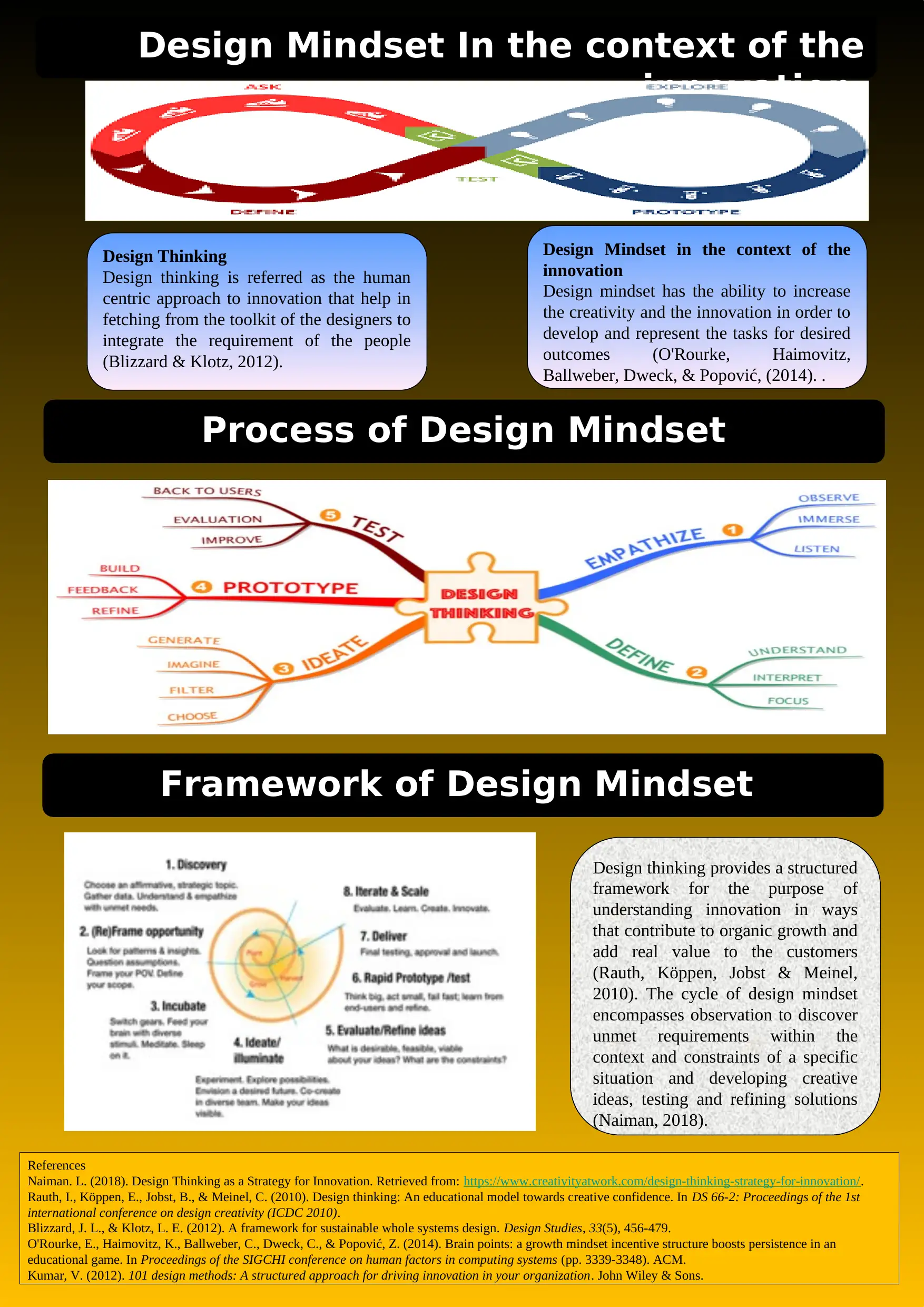Design Thinking and Innovation: Design Mindset and its Application
VerifiedAdded on 2023/06/10
|1
|364
|240
Report
AI Summary
This report delves into the realm of design thinking, exploring its role in driving innovation and fostering a customer-centric approach. It examines the concept of a design mindset, highlighting its significance in enhancing creativity and problem-solving capabilities. The report outlines the design thinking framework, emphasizing its structured approach to understanding innovation, and provides insights into how it can be applied to generate organic growth and add value to customers. It also references relevant research to support the concepts discussed, including the importance of a design mindset in educational and business contexts. The report discusses the cyclical nature of the design process, including the importance of observing, developing creative solutions, and testing and refining those solutions.





![[object Object]](/_next/static/media/star-bottom.7253800d.svg)